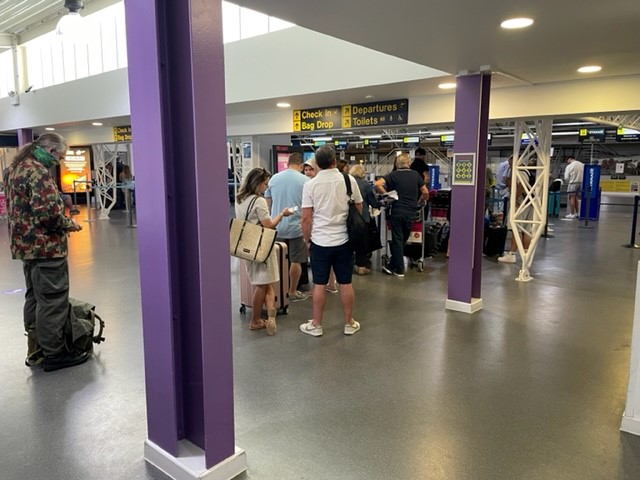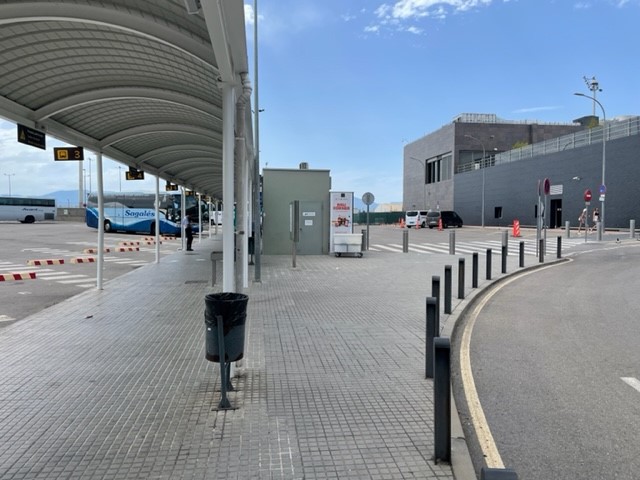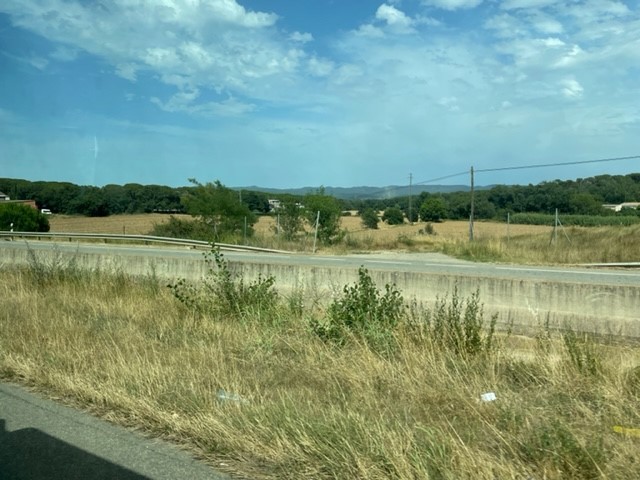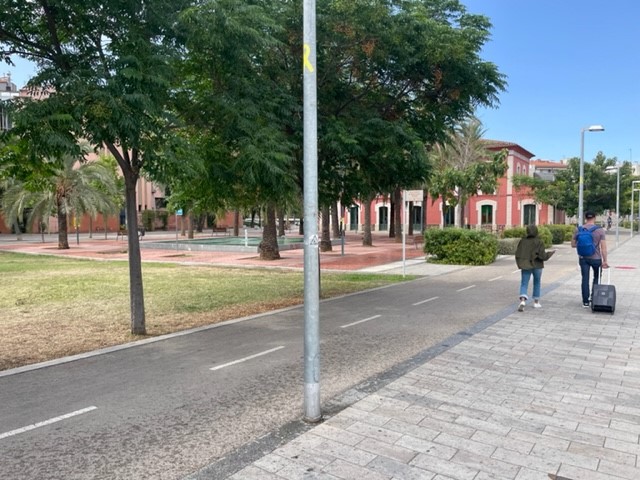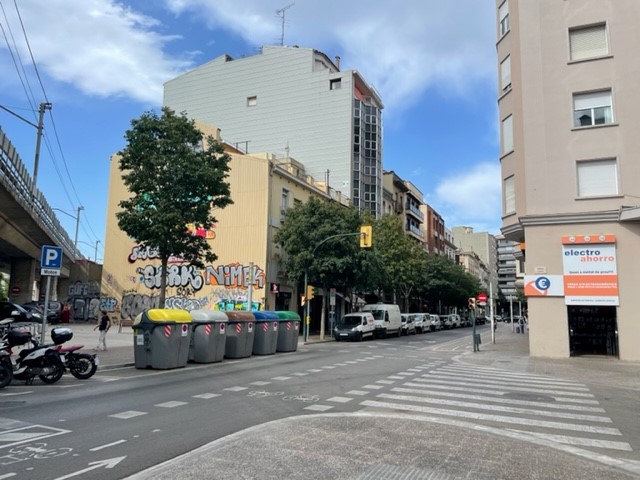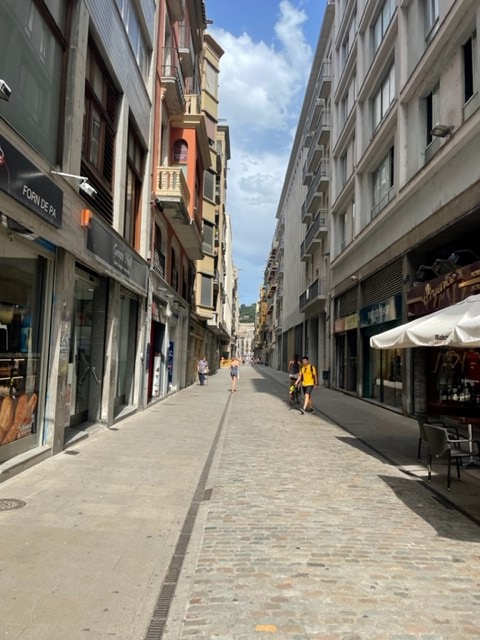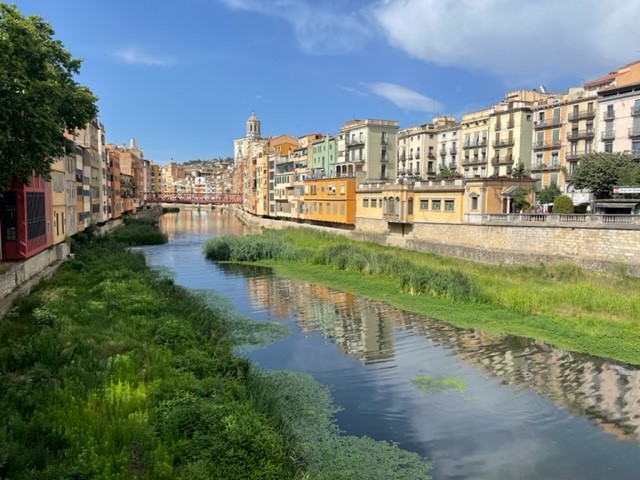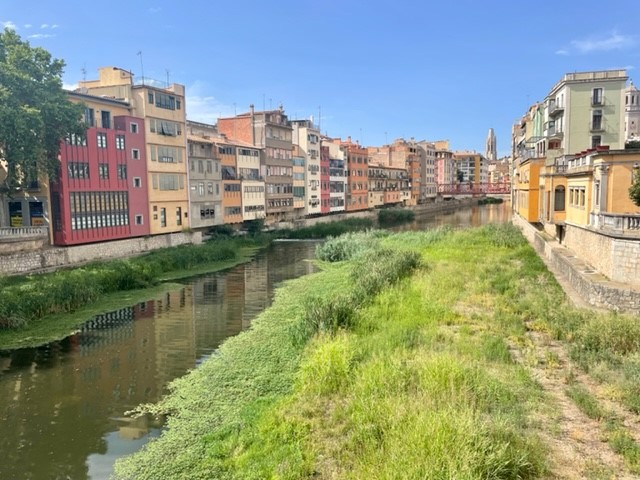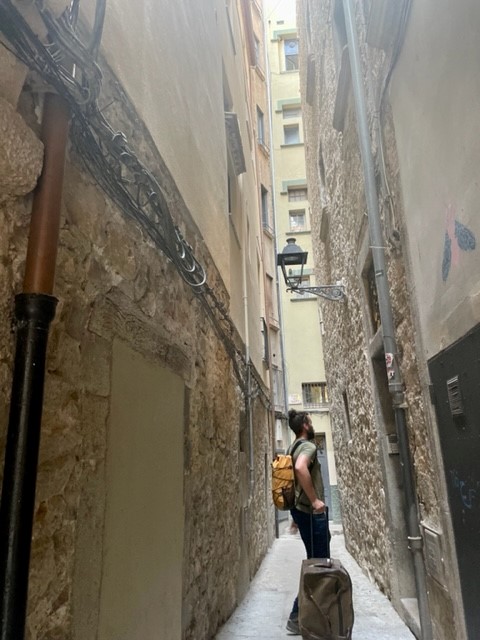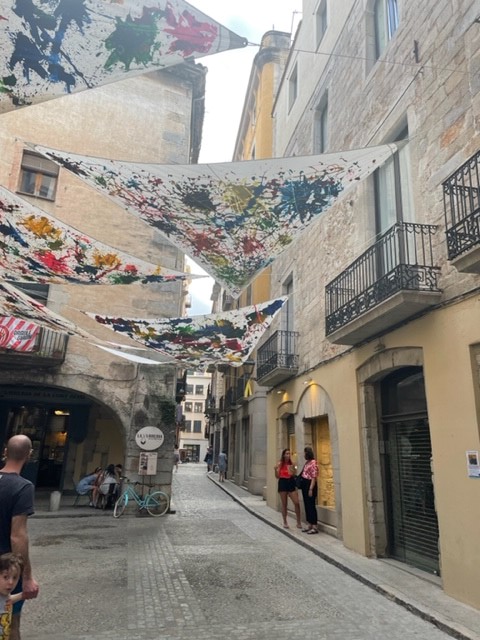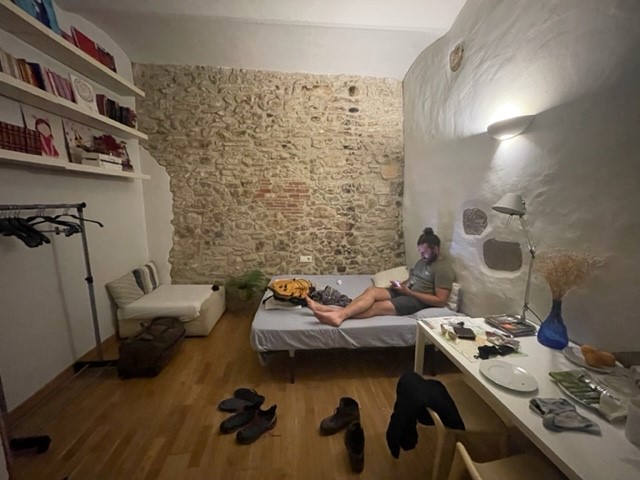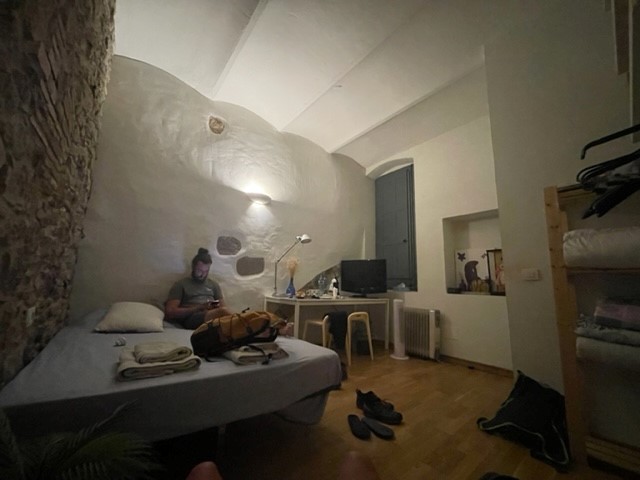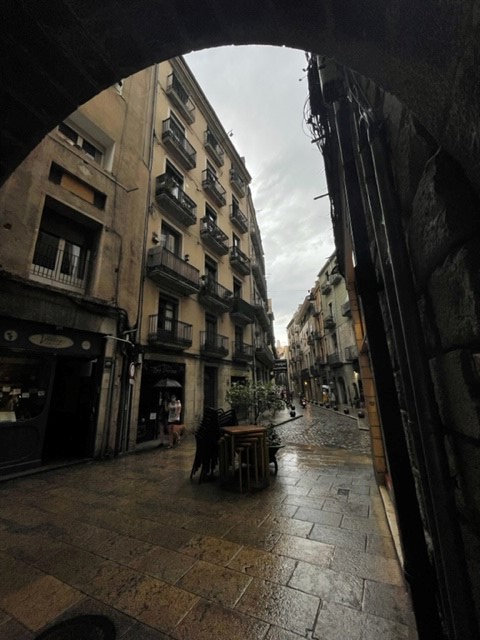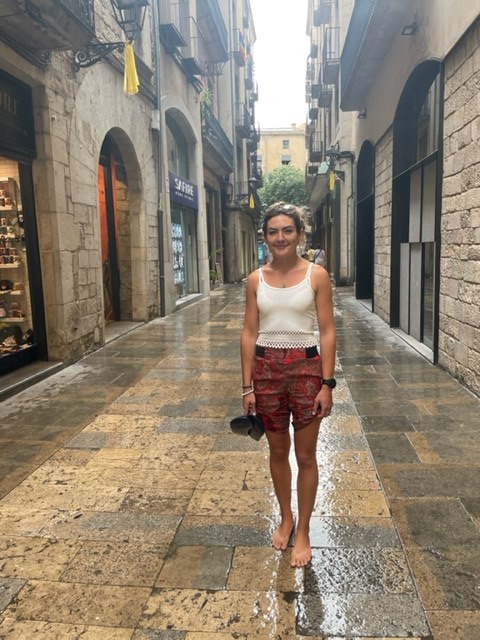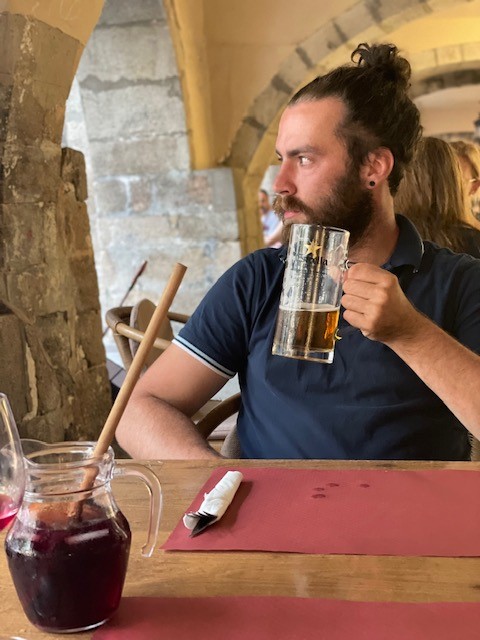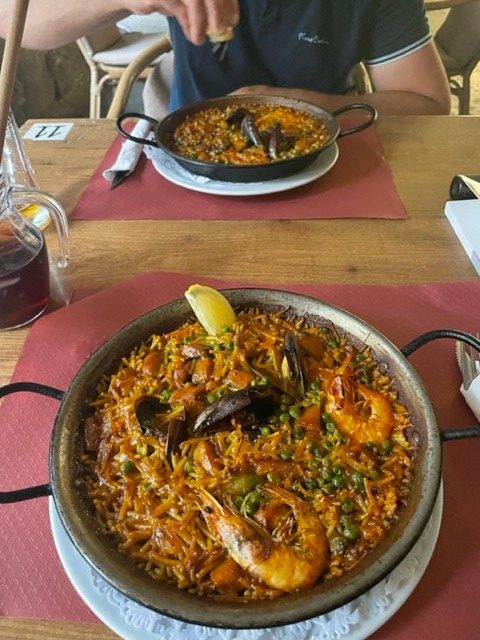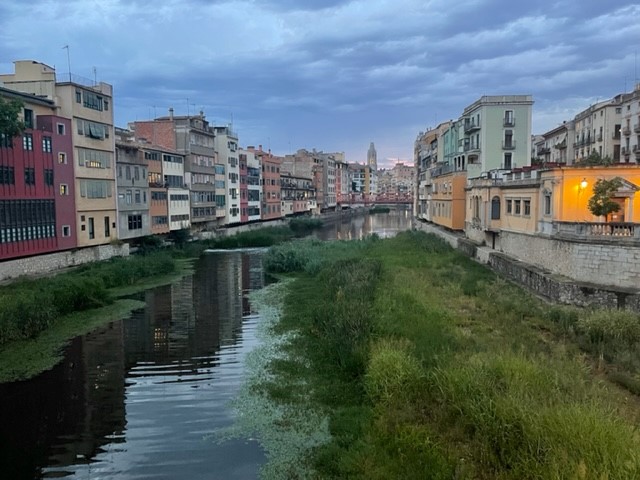7 July 2022
We decided to spend our first full day exploring the city after the fiasco we’d been through to get into Spain (read here). We left the room quite late, about 10.30am, and walked through the beautiful, quiet, cobbled streets of Old Town to the cathedral, which was barely 10 minutes from our apartment.



Cathedral
We wound through medieval stone streets, past a large round turret, under a huge arch and into a castle-like courtyard. Girona Cathedral loomed above us up a flight of about a hundred wide steps, a vast, majestic building with a clean-lined, simple shape but incredible intricacy in the stone details and carved figures that watch over the city. I could see why it was chosen as a set for Game of Thrones, with its perfectly preserved, timeless grandeur.



We climbed the stairs and paid for entry (€7 each), which included a free recorded audio tour – this turned out to be well worth doing. We entered the enormous, striking Gothic nave and learnt how it was the widest of its kind in the world: the architects had decided to forego the two columned aisles usually found on either side of a cathedral. An enormous wooden organ stood in the middle behind models of the cathedral’s development, and the edges were lined with 28 different chapels dedicated to saints. They all had unique stories and contained varying styles of carving, painting and sculpture, some dramatically ornate and some strikingly simple.







After about 45 minutes walking around the nave listening to the audio tour, we went through to the cloisters, the columned walk that encloses a grassy outdoor courtyard on all four sides. My favourite part was the several wide columns pointed out by the audio guide, each of which were engraved with 360 degree carvings telling biblical stories. We went up some stone stairs into a room featuring pieces of stained glass from different periods, then back down and out of the cloisters into the tapestried, chandeliered Chapel of Hope, where the lavish, gold-gilded “bed of the Assumption of Mary” sat under a high-ceilinged tower.





The last bit took us into the cathedral treasury museum, which contained various religious artefacts – sculptures, paintings, silverware, chests and manuscripts – and notably the fascinating 12th century Creation Tapestry, depicting the months and seasons. It was all so interesting that I almost wish I’d taken notes to remember it all. We left through a corridor back onto the façade overlooking the medieval square and the red-tiled city rooves, nearly two hours after we’d entered, and went off to find some lunch.




Lunch
We walked through the pretty, cool stone streets of Old Town, crossed the river and went to Placa de la Independencia, the large, restaurant-lined square we’d found the previous night. We sat down for lunch at Konig, a reasonably priced restaurant (we decided it was possibly the Wetherspoons of Girona, but no complaints), and I had a smoked salmon, avocado and ricotta bagel while Ryan had some kind of rice, pepper and calamari salad. A couple of glasses of sangria made me quite tipsy – I blame the heat – and we relaxed (to my initial agitation) there for a while before heading off to find the city wall walk.




Medieval Walls
We went back across the river, through the old streets and behind the cathedral, where incredibly tall, thin cypress trees stood over high stone walls, little public gardens and criss-crossing footpaths. On our way up some steps we bumped into a friendly local who told us his favourite spot in Girona to get a good view of the city, so we followed his directions down the hill and up some steep steps onto a high, narrow wall near the John Lennon gardens. We walked along this wall to the highest point, where we stopped to look over the city. The cathedral sat on a hill, the highest point in Girona, and dominated the foreground, along with the high stone tower of the San Felix Basilica. Tiled rooves sprawled between swathes of bright green trees, and the horizon was shaped by distant, hazy blue mountains. It was as stunning as the heat was stifling.










We backtracked along the wall and through the peaceful John Lennon gardens, then headed east along a path set between tall, lush trees towards the main medieval wall, pausing to look at a pair of striking green monk parakeets perched on a branch above us. We got to a large stone tower by the Jardins dels Alemanys and climbed the stairs inside to the top. We stood on the tower and stared across the terracotta rooves of Old Town, large modern blocks beyond the stone buildings, and layers of rolling mountains spanning the skyline, all interspersed with leafy vegetation.




The wall ran in a long, straight line with several towers spread along it, almost all of which we climbed. The views of the city were incredible, a mix of old and new, and somehow – despite the sprawling streets and mass of buildings – it seemed small set beneath the thickly forested hills. We bimbled along the length of the medieval walk, which took about half an hour with the tower stops, and climbed down the stairs at the other end, returning to the southern part of old town.




Old Town & Tapas
We took a rambling route back to the apartment through narrow, cobbled, litter-free streets, admiring the pretty, balconied, shuttered five-storey buildings of pastel orange, beige and bare stone that sat above a diverse array of little shops and restaurants. We got back about 5pm and went for a late siesta, exhausted by the heat. We headed back out around 8pm having realised the previous evening that the Spanish eat very late.





We crossed the carp-filled river and returned to the Konig bar on Placa de la Independencia for tapas. We shared potatoes with truffle cheese sauce, squid and scallop croquettes, beef strips with peppers, prawns in coconut, ginger and lime sauce, iberian ham croquettes, grilled octopus and a little bread basket, which seemed to come free with meals as standard. I wouldn’t normally order as much meat but I was desperate to try the local dishes. It was all very nice for only €40, including half a litre of Sangria and two pints of San Miguel. We ate, drank and people watched, charmed by the social, relaxed atmosphere – people of all ages were out until late and there was a nice, quiet buzz around the square.


We crossed back to Old Town over the bridge by the Basilica and walked through castle-like streets to see the cathedral at night. A bright, warm light accentuated its geometrical edges, detailed carvings and hundred steps, making it look even more striking than in daylight. It was lovely walking through the narrow stone back roads – although the bars and restaurants were bustling, particularly in the evening, there were plenty of quiet, timeless, totally empty little alleys and streets that we could dive down, where it felt as if we had the city to ourselves.





We shared a delicious vegan ice cream (one scoop each of passionfruit, snickers and caramel) on our way back to the apartment and found ourselves in a little square listening to a Catalonian three-man band, who sang and played guitar in that distinctive twangy, lively Spanish style. The music was lovely and we sat on a little wall behind the tables that spilled across the square, where people sat, sang and waved napkins to some well-known song. I was amusedly watching a chocolate labrador hoover the floor and be retrieved by its owner for the third or fourth time when a lady suddenly appeared in front of us offering a tray of small disposable cups, so we took one each and thanked her. It was some kind of hot, thin, strong, coffee flavoured alcohol, and after one sip I donated it to Ryan.
We went back to the apartment as the band packed up, amazed by the friendliness of people – the local who stopped to tell us his favourite spot in the city, an English-speaking man we befriended in the ice cream queue who recommended the Indian restaurant where we had our last meal of the trip and the lady who’d given us a free drink, despite us obviously only stopping in the square to listen to the music. I was quite taken with Girona.





